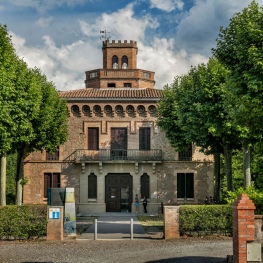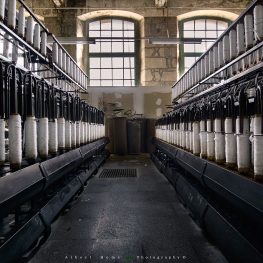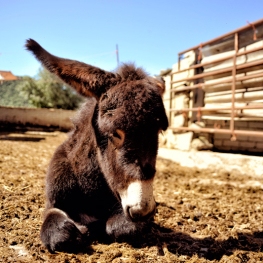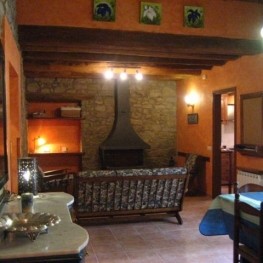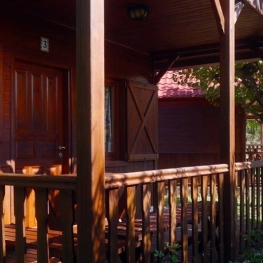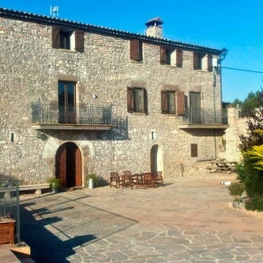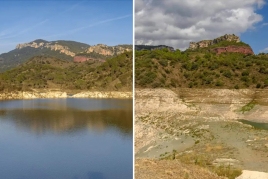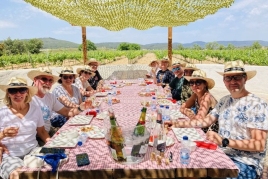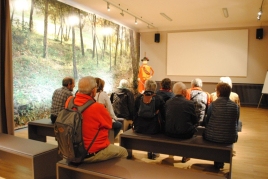The Witches of the Lluçanès

The Lluçanès is a plateau between the Berguedà and Osona, a territory where the pine forests coexist with the cereal fields, meadows and sinuous streams, a viewpoint from where you can observe the neighboring counties, a little populated place, rural, with small stone villages and isolated farmhouses. Until a few years ago the Lluçanès was little accessible, this secular isolation turned it into a mysterious territory, full of stories of witchcraft that move between the legend and historical reality.
We propose a route to discover a part of the Lluçanès through the witches, its memory still lives in these areas, and it is through these characters that we can also discover the landscape and the history of this place.
The Witchcraft in the Lluçanès
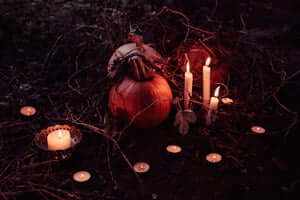 Witches were primarily women who performed rituals related to nature and fertility, creators of remedies made from herbs and other natural elements. From the Middle Ages, ecclesiastical and civil courts begin to question these customs, it is then when these women are persecuted and they go from being healers to being judged as dangerous women by their bad practices.
Witches were primarily women who performed rituals related to nature and fertility, creators of remedies made from herbs and other natural elements. From the Middle Ages, ecclesiastical and civil courts begin to question these customs, it is then when these women are persecuted and they go from being healers to being judged as dangerous women by their bad practices.
The high point of persecution occurs between 1616 and 1622. The Lluçanès is a mosaic full of witch legends however, apart from oral tradition stories, the truth is that documents are kept where the processes against several women are explained of this area accused of witchcraft.
The Thames Gorge
To get into the world of witchcraft of the Lluçanès we can start with the Garganta de las Heures, an old meeting place for witches, to get there we must enter into one of the small natural paradises of Lluçanès, the valley of la riera de Merlès, a water course with an environment of great scenic interest, full of lush vegetation that surrounds a stream with abundant water, alternating stretches of calm water with other stretches where water flows through jumps or stone walkways.
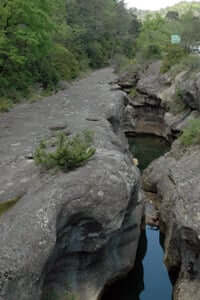
The streams have always been accompanied by stories related to fantastic beings such as elves, women of water and other characters of supernatural root, Throat of the Heures is a place mentioned in the statements of several women, processed by witchcraft, as a point of meeting to make the samaniats, as they were called in this area the akelarres, meetings where the witches did several rituals, places like these, far from any nucleus of population, were the favorites to make their activities to hide.
To get there we will have to go to the C-62 road and turn off at the junction that is right next to the bridge that crosses the Merlès stream, take the road in the opposite direction to Santa Maria de Merlès. This small road enters fully into the landscape of the stream, between km 6 and 7 we will find the diversion of this gorge characterized by being a deep gorge, with walls and rocks of sinuous forms resulting from erosion made by water, a place dark and mysterious, with echoes of the ancient meetings of witchcraft and other legends such as that explains that a person wanted to check the depth of the throat, to calculate it took a heavy stone and tied it with a rope, then a voice emerged from the bottom warned him that no matter how much rope he let go he would never find the bottom of his throat.
The Garganta de las Heures is crossed by a bridge, once crossed we can take a walk along the edge of the stream and walk a part of the road parallel to the stream, walking along the side of the meadows that are next to the riverbank forest.
This place is an example of the isolated places where the witches met, but in the Lluçanès there are other spaces in full nature identified as points where, according to tradition, samaniats were celebrated: the Fumanya Gorges, located on the edge of the stream Lluçanès, the source of the Bou, in the term of Lluçà, or the plain of the Bruges and the Balladora square, in the term of Sant Bartolomeu of the Grau.
The Witch Rock Napa
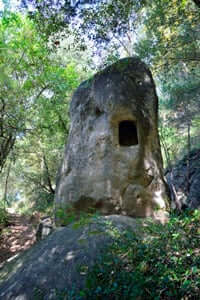 In the surroundings of Prats de Lluçanès we find another of the key places of witchcraft in the Lluçanès, it is Roc Foradat or the Witch Napa, a laga rock with a hole, practically square, in the center. Tradition says that here, in the middle of the forest, the witch Napa prepared her concoctions and made her spells. A place where the legend blends with historical reality because the witch Napa really existed, her real name was Maria Pujol, was feared by her neighbors and was accused of killing a girl in 1766 as they found some remains of the creature at home the witch, a macabre story that ended with the Napa hanging on the gallows.
In the surroundings of Prats de Lluçanès we find another of the key places of witchcraft in the Lluçanès, it is Roc Foradat or the Witch Napa, a laga rock with a hole, practically square, in the center. Tradition says that here, in the middle of the forest, the witch Napa prepared her concoctions and made her spells. A place where the legend blends with historical reality because the witch Napa really existed, her real name was Maria Pujol, was feared by her neighbors and was accused of killing a girl in 1766 as they found some remains of the creature at home the witch, a macabre story that ended with the Napa hanging on the gallows.
To get there, take the detour of Prats de Lluçanès from the C-62, once we are at the turnoff, take the first road on the right and continue until reaching the hermitage of San Pedro del Grau, from there we take the way between the hermitage and the farmhouse opposite, at the next crossroads turn left, in this section, halfway, we can make a stop following the deviation that leads to the chair of Galzeran, a rock in the form of a chair, this was an old strategic point where it is said that, during the first Carlist war, the Carlist General Joseph Galzeran could observe the movement of his troops and those of the enemy fighting in the valley of the merlès riera.
Once we return to the initial road we continue 200 meters, then turn right taking the rest of the walk, entering the forest, 500 meters later, we will find a wide road, we take it and after 200 meters we will reach the Witch Rock Napa. This route is indicated as one of the sections of the short path C-44.
Prats de Lluçanès
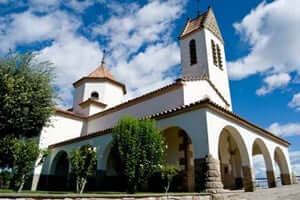 After a visit to the rock of the witch Napa, we can visit Prats de Lluçanès, strolling through the town visiting the church of San Vicente, in the baroque style, the church of the Good Luck, around which lies the nucleus primitive village of Prats, the old public laundries or the Old Square, stage of the Trencadansa, a dance that has become one of the most ingrained traditions of the municipality, danced on June 24 and 25, during the fiestas of San Juan and El Elois.
After a visit to the rock of the witch Napa, we can visit Prats de Lluçanès, strolling through the town visiting the church of San Vicente, in the baroque style, the church of the Good Luck, around which lies the nucleus primitive village of Prats, the old public laundries or the Old Square, stage of the Trencadansa, a dance that has become one of the most ingrained traditions of the municipality, danced on June 24 and 25, during the fiestas of San Juan and El Elois.
One of the most emblematic places, not only Prats but also the Lluçanès, is the sanctuary of Lourdes, located on the outskirts of the village. Built in a high place, this religious building is recognized from different places in the surroundings, it has a privileged vantage point that allows to see all the plateau of the Lluçanès.
Sant Feliu Sasserra
After the visit to Prats and its surroundings we head south, in Sant Feliu Sasserra, historical capital of Lluçanès. In this municipality we will also find elements related to witchcraft, if we go to the square of Bishop Torras and Bages, the church square, we will find the Interpretation Center of the Witchcraft. In this space they highlight the main custom of witches, especially the Lluçanès, the historical context in which they lived and a review of the most outstanding facts related to witchcraft. The exhibition counts on scenographic and audiovisual elements that make the recreation of the judgment to a witch and also of a Samaniat, that is to say an akelarre.
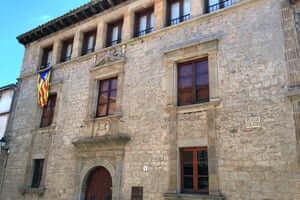
Just in front of the interpretation center is the parish church of Sant Feliu, a late sixteenth-century Gothic building, a temple that dates back to the 10th century as shown by the Romanesque doorway on the side of the church. On one of the outer walls we can see the space where the communist was located , a small covered, without walls, that the priests used to make prayers and exorcisms against the storms and hailstones that could damage the cultures of the area. These meteorological phenomena were often claimed to be triggered by witches, the ringing of church bells were also considered an antidote to these storms as the blessed sound of bells was thought to be terribly bad for witches.
The town hall of Sant Feliu Sasserra is one of the most outstanding buildings of the town, we will find it in the Plaza Mayor. The construction, with a Renaissance façade, has a political significance since, during the seventeenth century, it was the headquarters of the old sub-store of the Lluçanès, the court of this institution of government was responsible for judging several women accused of witchcraft.
Once you have visited the town hall, from the Plaza Mayor we connect with the main street, the main road of the town, we follow this street to the outskirts of the town, then we will arrive at one of the most symbolic places of witchcraft in Lluçanès: el Serrat de les Forques.
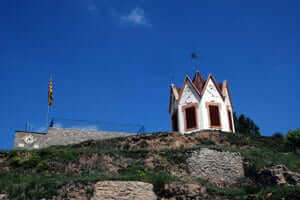 This small mountain on the outskirts of the village was the place where, during the seventeenth century, the witches who had been condemned by these practices were hung. According to historical documents, between 1618 and 1648, 23 women were prosecuted for witchcraft, of which at least 6 were executed. Nowadays, in this mountain range we will no longer find any forecourt, only the Vilaclara gazebo, a curious modernist building that has become an icon for Sant Feliu Sasserra. This place of remembrance of the ancient witches today has become a viewpoint from which to observe Sant Feliu and the south of Lluçanès, on clear days we can also observe the Pyrenees and Montserrat.
This small mountain on the outskirts of the village was the place where, during the seventeenth century, the witches who had been condemned by these practices were hung. According to historical documents, between 1618 and 1648, 23 women were prosecuted for witchcraft, of which at least 6 were executed. Nowadays, in this mountain range we will no longer find any forecourt, only the Vilaclara gazebo, a curious modernist building that has become an icon for Sant Feliu Sasserra. This place of remembrance of the ancient witches today has become a viewpoint from which to observe Sant Feliu and the south of Lluçanès, on clear days we can also observe the Pyrenees and Montserrat.
The Witches' Fair
 The Serrat de les Forques is one of the stages of the Bruges Fair, the main festive event in Sant Feliu Sasserra. Every year, for all the Saints, the people return to the seventeenth century to remember the mysterious world of witchcraft and the historical events occurring around witches. The fair fills the streets and squares of stalls with craft and esoteric products but also theatrical performances that recreate the samaniats, the concerns of the neighbors of that time, the trials for witchcraft and the conviction and execution of a witch. The fair is celebrated on November 1st but the activities start the day before at night with the "Fes-ta bruixa", a show where the invocation of the party is made.
The Serrat de les Forques is one of the stages of the Bruges Fair, the main festive event in Sant Feliu Sasserra. Every year, for all the Saints, the people return to the seventeenth century to remember the mysterious world of witchcraft and the historical events occurring around witches. The fair fills the streets and squares of stalls with craft and esoteric products but also theatrical performances that recreate the samaniats, the concerns of the neighbors of that time, the trials for witchcraft and the conviction and execution of a witch. The fair is celebrated on November 1st but the activities start the day before at night with the "Fes-ta bruixa", a show where the invocation of the party is made.
You may also be interested in: Dream of the legends of Catalonia
What to do
La Torre de l'amo de Viladomiu Nou
Gironella (a 12 Km)Transported back in time and enjoy a building protected as a cultural…
Museu de la colònia Vidal de Puig-Reig
Puig-reig (a 11.8 Km)The visit to Colonia Vidal de Puig-reig allows us to capture how…
Centre d'interpretació de l'Església de Cal Pons
Puig-reig (a 12.3 Km)The Interpretation Center of the Colonia Pons Church, through three museum spaces,…
Fuives, centre mundial del ruc català
Olvan (a 13.3 Km)Stroll along the paths of Fuives for close more than a hundred…
Where to eat
Bar Restaurant Xato
Gironella (a 12.8 Km)Place your order for pizzas, hamburgers, tapas... at the Xato Bar-Restaurant and…
Apart Hotel Restaurant Cal Marçal
Puig-reig (a 11.9 Km)Small apart hotel located in the Lower Berguedà also has bar and…
Restaurant Dachs
Les Llosses (a 9.8 Km)Ideal for celebrating. It has a large parking lot, and disabled access.…
Where to sleep
Càmping Riera de Merlès
Borredà (a 6.2 Km)If you are looking for rest and enjoy the tranquility, this is…
Sellarés Rural
Sallent (a 14.5 Km)Sellarés Cal is a farmhouse documented from the fourteenth century, located in…


